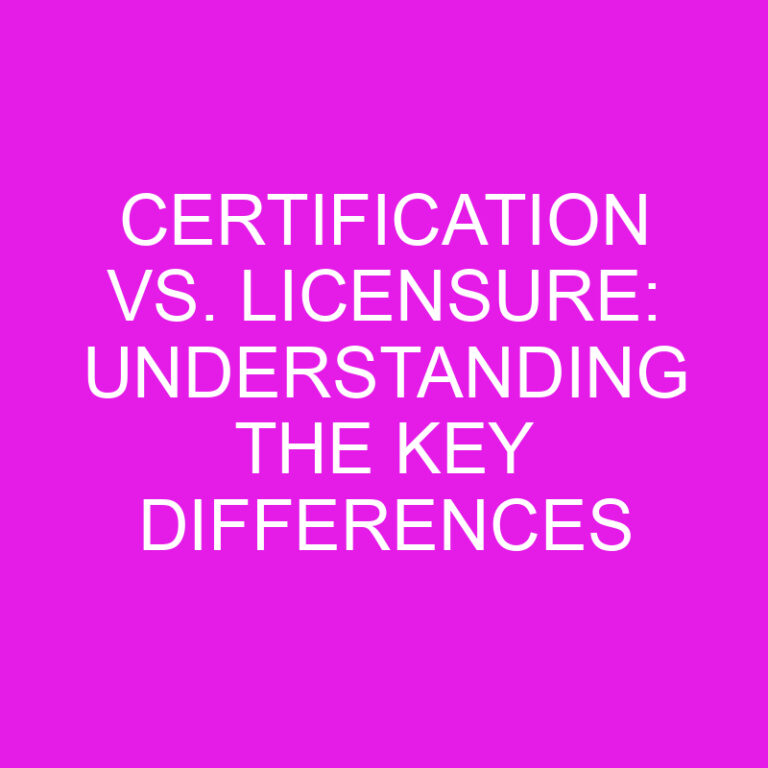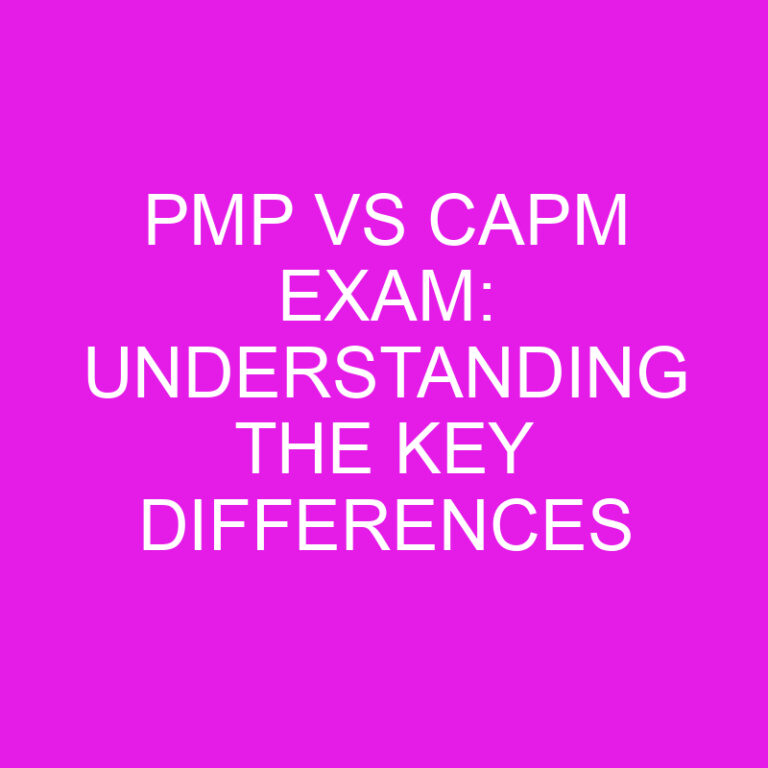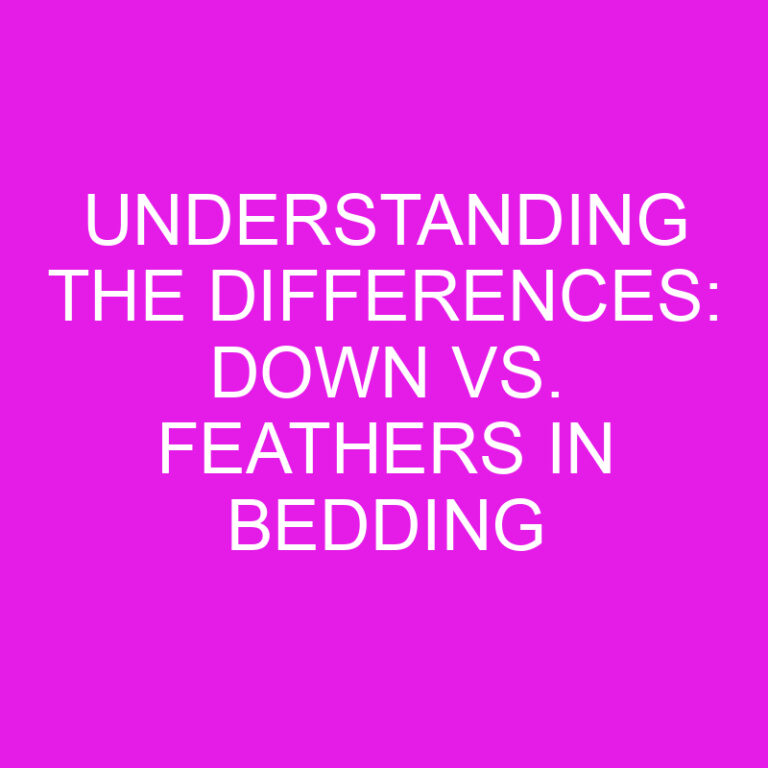
Hey there! Have you ever wondered about the difference between “can” and “may”? Well, you’re not alone! Many people get confused between these two words, but fear not, because I’m here to shed some light on the matter. In this article, I’ll explain the distinctions between “can” and “may” and how to use them correctly in different contexts. So, let’s dive right in and unravel the mystery behind these two commonly used words!
Post Contents
Key Takeaways
- “Can” is a modal verb used to express ability, while “may” is used to express permission or possibility.
- “Can” implies physical or mental capacity to perform an action, while “may” implies granting approval or the likelihood of something happening.
- The key distinction between “can” and “may” lies in their usage – “can” for abilities, “may” for permission or possibility.
- “Can” can be used informally for making requests or offers.
- Understanding the differences between “can” and “may” enhances communication and helps convey intended meaning effectively.
- Common mistakes to avoid include using “can” instead of “may” for permission and vice versa, and not considering the level of formality in your communication.
Can vs. May: Understanding the Difference
As a language expert, I often find that many people struggle with understanding the difference between “can” and “may.” These two words may seem interchangeable at first glance, but they actually have distinct meanings and uses. Let’s dive into the nuances of these words and unravel their mystery.
Can is a modal verb that is used to express the ability or capability to do something. It implies a physical or mental capacity to perform an action. For example:
- “I can swim.” (I have the ability to swim.)
- “She can speak French fluently.” (She has the capacity to speak French fluently.)
On the other hand, may is also a modal verb, but it is used to express permission or possibility. It implies the granting of approval or the likelihood of something happening. Here are a couple of examples:
- “May I use your pen?” (Can I have your permission to use your pen?)
- “It may rain later.” (There is a possibility that it will rain later.)
The key distinction between “can” and “may” lies in their usage. “Can” is used when referring to abilities and capabilities, while “may” is used when seeking permission or expressing possibility. It’s important to keep these differences in mind to avoid confusion and miscommunication.
Moreover, it’s worth noting that “can” can also be used to make requests or offers in a more informal context:
- “Can you pass me the salt, please?” (Requesting someone to pass the salt)
- “Can I help you with anything?” (Offering assistance)
Now that you have a better understanding of the difference between “can” and “may”, you can confidently use these words in the appropriate contexts. Remember, proper usage enhances communication and helps convey your intended meaning effectively. So, next time you come across these words, ask yourself whether you are referring to ability or seeking permission, and choose accordingly.
Defining “Can”
When it comes to understanding the difference between “can” and “may,” it’s important to start by getting a clearer definition of each word. In this section, I’ll focus on defining “can” and explain its usage in various contexts.
- “Can” is a modal verb that expresses ability or capability. It indicates that someone or something has the capacity to do or achieve something.
- It is used to talk about what someone is physically or mentally capable of doing. For example, “I can swim” indicates one’s ability to swim.
- It can also be used to talk about a general ability or possibility. For instance, “Dogs can be trained” indicates that training is a possibility for dogs in general.
- Additionally, “can” can be used to make requests or offers in a more informal context, replacing “may.” For example, “Can I borrow your pen?” or “Can I help you with that?”
While “can” primarily focuses on ability or capability, it’s important to note that it doesn’t imply permission or formality in the same way as “may” does. Understanding this distinction will help us communicate more effectively and avoid any potential confusion.
By clearly defining “can,” we can now explore its usage in different scenarios and understand when to use it appropriately. Let’s dive deeper into the subject in the following sections.
Defining “May”
When it comes to understanding the difference between “can” and “may,” it’s essential to define each word and explore its usage. In this section, I’ll focus on defining the word “may,” its function as a modal verb, and how it differs from “can.”
“May” is a modal verb that primarily expresses permission or possibility. It indicates that something is allowed to happen or might happen. Let’s take a closer look at how “may” is used in different contexts:
- Permission: “May” is commonly used to ask for or give permission in more formal settings. It implies a sense of politeness and respect. For example:
- May I go to the restroom, please?
- Yes, you may go ahead.
- Possibility: “May” can also be used to express a likelihood or probability of something happening. It suggests that there is a chance or opportunity for a specific outcome. For instance:
- It may rain later today.
- There may be some delays due to heavy traffic.
- Wishes and Suggestions: In some cases, “may” is used to express wishes or suggestions. It implies a desire or a recommended course of action. Here are a couple of examples:
- May you have a wonderful birthday!
- You may want to consider studying abroad.
It’s important to note that while “may” is often associated with formal language, it can be used in various contexts, including writing, speaking, and everyday conversation, to convey permission or possibility.
Understanding the definition and usage of “may” allows us to distinguish it from “can” more effectively. While both words touch upon ability and permission, “can” primarily focuses on capability and general ability, whereas “may” emphasizes permission, possibility, and more formal settings.
Next, we’ll delve into the specifics of “can” to further differentiate it from “may” and enhance our communication skills.
Usage of “Can”
When it comes to the usage of the word “can”, there are a few key points to keep in mind. Let’s dive in and explore how this word is commonly used:
- Expressing Ability or Capability: One of the primary uses of “can” is to express someone’s ability or capability to do something. For example, “I can swim” or “She can speak French fluently.” It communicates that the person has the skill or capacity to perform the action mentioned.
- General Ability or Possibility: “Can” can also be used to talk about a general ability or possibility. In this case, it refers to what is generally true or possible, rather than a specific instance. For instance, “Dogs can hear sounds that humans cannot.” Here, we are talking about the general ability of dogs to hear certain sounds, not a particular dog in a specific situation.
- Making Requests or Offers (Informal): Another common use of “can” is to make requests or offers in a more informal context. For example, “Can you pass me the salt?” or “Can I help you with anything?” This expresses a polite way of asking for something or offering assistance.
It’s important to note that while “can” is a versatile word that can convey various meanings, it is often used in a more general and informal context. Understanding these different uses of “can” allows us to communicate effectively and avoid confusion.
Usage of “May”
When it comes to the usage of the word “may,” it primarily expresses permission or possibility. It is commonly used in formal settings to ask for or give permission. However, it has a broader scope and can also be used to express a likelihood or probability of something happening. Additionally, “may” can be used to express wishes or suggestions.
Here are a few key points to understand about the usage of “may”:
- Permission: In formal language, “may” is commonly used to ask for permission. For example:
- May I borrow your car?
- May I speak with the manager?
- Possibility: “May” can also be used to express the possibility of something happening. It indicates that there is a chance or likelihood of a particular event occurring. For instance:
- It may rain tomorrow.
- She may be late for the meeting.
- Wishes or suggestions: In some contexts, “may” can also be used to express wishes or suggestions. It conveys a desire or a recommended course of action. For example:
- May all your dreams come true.
- You may want to consider taking a different approach.
Understanding the usage of “may” allows us to effectively convey permission or possibility in different situations. It is essential to use this word appropriately in order to avoid confusion or misinterpretation.
Next, let’s delve deeper into the usage of “can” and explore its versatility when it comes to expressing ability, possibility, and making requests or offers in a more informal context.
Common Mistakes to Avoid
When it comes to using “can” and “may,” there are a few common mistakes that people often make. Understanding these mistakes and how to avoid them will help you communicate more effectively. Here are some of the most common mistakes and how to steer clear of them:
- Using “can” instead of “may” for permission: One of the most frequent errors is using “can” instead of “may” when asking for or giving permission. While “can” can be used to express ability, it is not the correct choice when it comes to formal situations or seeking permission. For example, instead of saying, “Can I leave the meeting early?” it would be more appropriate to say, “May I leave the meeting early?”
- Using “may” instead of “can” for ability: On the other side of the coin, people often mistakenly use “may” when they actually mean to express ability or capability. Remember that “can” is used to denote one’s capacity to do something, while “may” primarily indicates permission or possibility. So, if you want to convey your ability to perform a task, use “can” instead of “may.”
- Not considering the level of formality: Another mistake is not considering the level of formality in your communication. “May” is generally more formal than “can.” Therefore, in more professional or formal situations, it is better to use “may” to ask for permission or convey possibility. On the other hand, “can” is typically used in more casual or informal contexts.
Avoiding these common mistakes will enhance your language skills and help you communicate more clearly and appropriately. Remember to pay attention to the level of formality and choose between “can” and “may” based on the specific context.
Conclusion
Understanding the difference between “can” and “may” is crucial for effective communication. “Can” is used to express ability or capability, as well as to make requests or offers in a more informal context. On the other hand, “may” primarily expresses permission or possibility, and it is commonly used in formal settings.
By using “can” correctly, we can convey our abilities and capabilities accurately. It allows us to express what we are capable of doing or what is possible in a given situation. Additionally, using “can” in informal contexts helps us make requests or offers in a more casual and friendly manner.
Meanwhile, using “may” appropriately allows us to ask for or give permission in formal settings. It also helps us express the likelihood or probability of something happening. Moreover, “may” can be used to convey wishes or suggestions.
By understanding the nuances of these two words, we can avoid confusion and miscommunication. So, whether it’s expressing ability, asking for permission, or conveying possibilities, using “can” and “may” correctly will enhance our language skills and enable us to communicate more clearly and appropriately.
Frequently Asked Questions
Q: What is the difference between “can” and “may”?
A: “Can” is used to express ability or capability and can also be used to talk about a general ability or possibility. It is often used to make requests or offers in an informal context. On the other hand, “may” is a modal verb primarily used to express permission or possibility. It is commonly used in formal settings to ask for or give permission, and it can also express a likelihood or probability of something happening. “May” can also be used to express wishes or suggestions.
Q: How should I use “can” correctly?
A: Use “can” to talk about ability or capability. It can also be used to express a general ability or possibility. Additionally, “can” is suitable for making requests or offers in an informal context. Remember that “can” should not be used when asking for or giving permission in formal settings. Be mindful of the level of formality in your communication.
Q: When should I use “may” in my writing or speech?
A: Use “may” primarily to ask for or give permission in formal settings. It can also express a likelihood or probability of something happening. Moreover, “may” can be used to convey wishes or suggestions. While it is commonly associated with formal language, “may” can be used in various contexts to express permission or possibility. Carefully consider the appropriate level of formality when incorporating “may” into your writing or speech.
Q: What are some common mistakes to avoid when using “can” and “may”?
A: Common mistakes include using “can” for permission instead of “may” in formal settings and vice versa. It is also important to consider the level of formality in your communication. Using “can” instead of “may” in a formal context may be seen as less polite or respectful. Pay attention to the correct usage of “can” and “may” to enhance your language skills and communicate more clearly and appropriately.






